From the Earliest Visions to the Graphics of the Modern Era by Ron Miller forewords by Carolyn Porce and Dan Durda
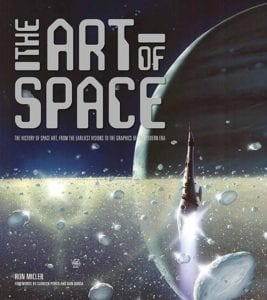
Before the publication of Jules Verne’s From the Earth to the Moon (1865) and Around the Moon (1869), literary journeys to the moon and planets were almost exclusively limited to allegory, fantasy or satire. Two things were needed to change fantasy into reality.
First, there needed to be solid, scientific knowledge about the actual conditions that existed beyond the earth’s atmosphere and on the moon and other planets. Second, there needed to be a realistic means of leaving the earth.
Today’s space artists are able to work with photographs and information gathered firsthand by space probes, orbiters, landers, and rovers—and in levels of detail that would have astonished the space artists of even half a century ago. Yet these artists fulfill the same functions as those of the nineteenth and early twentieth centuries. They instruct, they inspire, and they amaze—while at the same time creating a visual record, frozen in time, of what humans knew of the universe, and their aspirations for the future.
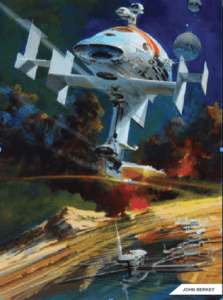
After creating the covers for Ballantine Books’ STAR series in the 1970s, John Berkey’s work was in great demand for science-fiction book covers. This painting, End of the Run, is typical of the work he did. Berkey was eventually inducted into the Society of Illustrators’ Hall of Fame, where he was called the most influential and innovative futurist artist of his time.
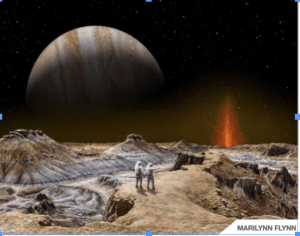
In Shamshu Sojourn, a painting created in 2011, Marilynn Flynn depicts a pair of astronauts exploring the Shamshu region of Jupiter’s volcanic moon, Io. The scene was inspired by a visit to the “Devil’s Kitchen” area near Greybull, Wyoming, a geologic oddity that appeared as the alien planet Klendathu in the 1997 film Starship Troopers.
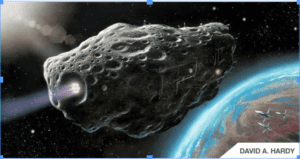
Harking back to the hollowed-out asteroids of Frank R. Paul and James Cutter, David Hardy takes the idea to a new level. Instead of just providing a habitat, the asteroid is an interstellar spacecraft. Here we see it, light-years from home, having arrived finally at a distant earthlike world.
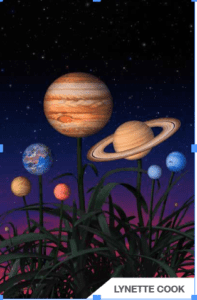
Growing Planets is one of a series of surrealistic paintings by Lynette Cook that bring to mind the work of René Magritte. Here she not only plays upon the evolutionary process by which our solar system was created—she indulges in a nice pun as well.
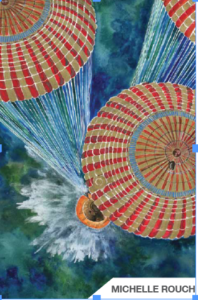
Michelle Rouch turns the splashdown of an Apollo Command Module into a near-abstract design. A fine artist with a master’s degree in engineering, Rouch has not just a special appreciation of the technology of space flight, but also the ability to depict it with skill and imagination.
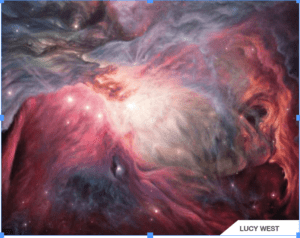
Lucy West was inspired by M42, the Great Nebula in Orion, one of the most beautiful sights in the night sky. Although the Great Nebula is easily visible through even a small telescope, it took the Hubble Space Telescope to reveal its full grandeur.
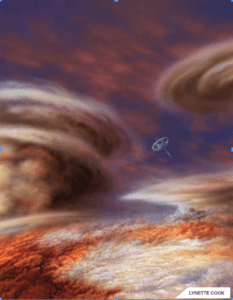
Here Lynette Cook imagines the future exploration of HD168443c, a giant Jupiter-like planet orbiting a sunlike star. Like Jupiter, this planet probably has no solid surface on which a spacecraft could land, so the only way to explore it would be to drift among its towering clouds.
